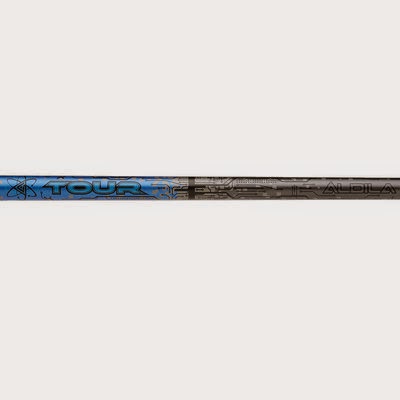The Velox Sp is back- Matrix and weighted designed this shaft to be used with heads that are heavier and longer clubs to create mid-start and spin features. In a nutshell; this motorist is made for the golfer looking to hit the ball.
The Velox the St was fashioned for more conventional club assembles and has a stiffer tip section that will lead to less twist and lower ball flight. It is the rotating shaft you may be more inclined to find in a Tour pro's motorist because it is designed for a player that wants a bit more control.
I reviewed both the Velox Sp and the Velox St (60 grams) in a 9.5o Callaway Shaver Burst Xtreme head.
Feel
I will be fair, this was among the most bizarre reviews I've had to do so far because of this website. It was very fascinating taking a peek at the amounts later and hitting both. I felt like Matrix's claims were supported by the testing about each rotating shaft.
The Velox Sp felt soft and quite whippy in my experience, but it had lots of kick. This made it a little hard for me to adapt to because I had trouble getting the timing down within my swing. I settled in with it, I felt like I could simply set a swing on the ball that was decent and the rotating shaft would do all. The Velox Sp did as unresponsive if you ask me so I'd set lots of confidence in the performance of the golf club and my mechanics. Do not be deceived by this. I am quite impressed by this shaft will be discussed in the Performance section of the review.
The Velox St felt the greatest by a mile to me. The shaft was hardy and really receptive throughout the entire swing. I happened when I was analyzing to be with Matt, and he pointed out that it seemed like I'd way more self-assurance swing away and to simply attack the ball. I believe this is an exact assessment. The profile and kick of the shaft felt more slow and managed at contact. This doesn't surprise me based on point section in the Velox St rotating shaft and the stiffer end section.
Looks
Matrix makes a good looking golf shaft that does not go way overboard with images but keeps some nature that is subtle. I'd simplify that statement by saying "they get the little things right." The images are silver and a fundamental azure but they lack the stand trademark bold Matrix symbol that we are used to seeing. This is not a big deal to me but you might be disappointed by that fact, in case you 're that guy or gal. The best part is the little graph on the rotating shaft that shows the flex profile of the shaft.
Operation
I could likely bring both the Velox St and the Matrix Velox Sp out on the class and have fairly great effects. When looking at my Launch Monitor amounts (comparison graph courtesy of RoboToaster and our own Andrew Jesernig), I was certainly performed quite differently for by both rotating shafts. The only likeness was my launching angle, which I found fascinating on the basis of the features of the shaft. I thought that there would be more difference.
The amounts reveal I'd better control but less space although as mentioned earlier, I did not feel as confident. I think the dearth of assurance is what cost me the added clubhead speed and space, though this shaft is geared for space.
The Matrix Velox St in take gave me about 11 yards more complete space and about 12 yards. As said before, I felt assured with this shaft which I consider led to more competitive swings.
Decision
Needless to say, I run into the conundrum of the common golfer: do I go with less precision and more space as seen in the Velox St, or do I give space and use the golf club I hit more precisely (the Velox Sp)? If I needed to pick I believe, I had take the Velox St on the class and make an effort to enhance my truth with machinists that are better. If I were to go while purchasing a shaft at a store based from the amounts, I will have to say it makes the most sense to opt for the Velox Sp. It's more, although totally okay carry and absolute space truth allowing the launching computer screen for me. I believe it is essential to trust these amounts and finally play with the shaft that places you in the fairways. The attractiveness is that Matrix allows you to narrow it down immediately and decide the shaft that is right.







